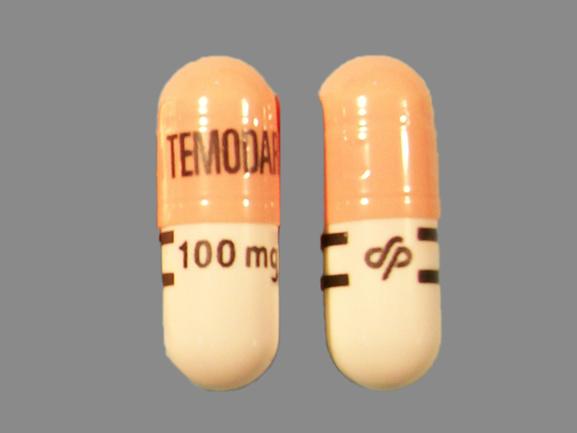Temodar Disease Interactions
There are 4 disease interactions with Temodar (temozolomide).
Temozolomide (applies to Temodar) urticaria
Major Potential Hazard, High plausibility. Applicable conditions: Allergies
Temozolomide is contraindicated in patients with a history of urticaria, allergic reaction including anaphylaxis, toxic epidermal necrolysis, and Stevens-Johnson syndrome.
References
- "Product Information. Temodar (temozolomide)." Schering Corporation PROD (2001):
Temozolomide (applies to Temodar) hepatic impairment
Moderate Potential Hazard, Moderate plausibility. Applicable conditions: Liver Disease
A study showed that the pharmacokinetics of temozolomide in patients with mild-to-moderate hepatic impairment (Child-Pugh Class I - II) were similar to those observed in patients with normal hepatic function. Caution should be exercised when temozolomide is administered to patients with severe hepatic impairment.
References
- "Product Information. Temodar (temozolomide)." Schering Corporation PROD (2001):
Temozolomide (applies to Temodar) myelosuppression
Moderate Potential Hazard, High plausibility. Applicable conditions: Bone Marrow Depression/Low Blood Counts, Pancytopenia
Patients treated with temozolomide may experience myelosuppression, including prolonged pancytopenia, which may result in aplastic anemia, which in some cases has resulted in a fatal outcome. Prior to dosing, patients must have an absolute neutrophil count (ANC) greater than or equal to 1.5 × 109/L and a platelet count greater than or equal to 100 × 109/L. A complete blood count should be obtained on Day 22 (21 days after the first dose) or within 48 hours of that day, and weekly until the ANC is above 1.5 × 109/L and platelet count exceeds 100 × 109/L. Therapy with temozolomide should be administered cautiously in patients with compromised bone marrow reserve. Close clinical monitoring of hematopoietic function is recommended.
References
- "Product Information. Temodar (temozolomide)." Schering Corporation PROD (2001):
Temozolomide (applies to Temodar) renal impairment
Moderate Potential Hazard, Moderate plausibility. Applicable conditions: Renal Dysfunction
Temozolomide population pharmacokinetic analysis indicated that creatinine clearance over the range of 36 to 130 mL/min/m2 has no effect on its clearance after oral administration. The pharmacokinetics of temozolomide have not been studied in patients with severely impaired renal function (CrCl <36 mL/min/m2). Caution should be exercised when temozolomide is administered to patients with severe renal impairment. Temozolomide has not been studied in patients on dialysis.
References
- "Product Information. Temodar (temozolomide)." Schering Corporation PROD (2001):
Temodar drug interactions
There are 260 drug interactions with Temodar (temozolomide).
More about Temodar (temozolomide)
- Temodar consumer information
- Check interactions
- Compare alternatives
- Pricing & coupons
- Reviews (7)
- Drug images
- Side effects
- Dosage information
- During pregnancy
- FDA approval history
- Drug class: alkylating agents
- En español
Related treatment guides
Drug Interaction Classification
| Highly clinically significant. Avoid combinations; the risk of the interaction outweighs the benefit. | |
| Moderately clinically significant. Usually avoid combinations; use it only under special circumstances. | |
| Minimally clinically significant. Minimize risk; assess risk and consider an alternative drug, take steps to circumvent the interaction risk and/or institute a monitoring plan. | |
| No interaction information available. |
Further information
Always consult your healthcare provider to ensure the information displayed on this page applies to your personal circumstances.


